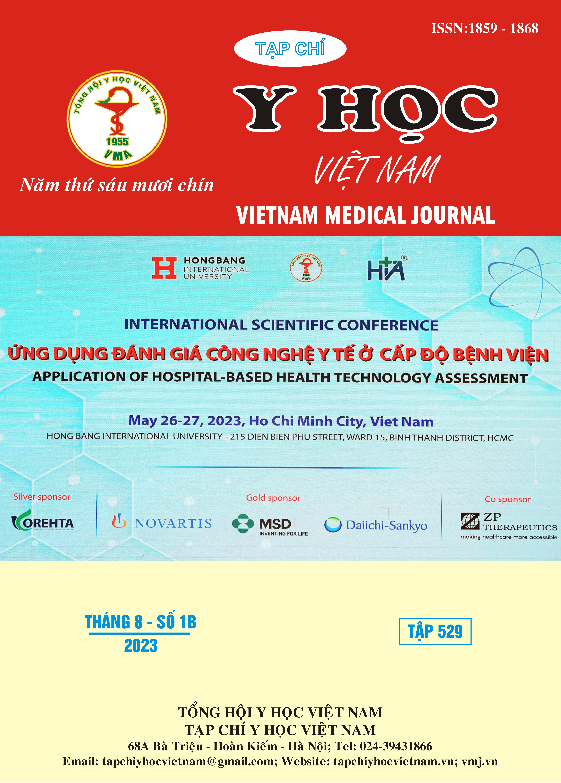RESULTS OF GENETIC COUNSELING INTERVENTION FOR UNIVERSITY STUDENTS CARRYING THALASSEMIA GENE AT CAN THO UNIVERSITY OF MEDICINE AND PHARMACY
Main Article Content
Abstract
Background: The World Health Organization has identified Thalassemia as a global health issue. Objectives: Evaluation of intervention results by genetic counseling on first-year students carrying thalassemia gene at Can Tho University of Medicine and Pharmacy. Materials and methods: First-year regular and part-time medical students (class 47 and 35, respectively) at Can Tho University of Medicine and Pharmacy who were diagnosed with carrying the Thalassemia gene. Results: Prior to genetic counseling, there was a discrepancy in the level of correct knowledge among students regarding all three areas. However, after counseling, there was a significant increase of 100% in knowledge in all areas with a statistical significance of 95% confidence interval. Specifically, knowledge of Thalassemia increased significantly from 53.5% to 81.08%, whereas knowledge of patient care for Thalassemia had increased from 34.39% to 50.14%. Conclusions: Enhancing knowledge through counseling is an effective measure for preventing Thalassemia.
Article Details
Keywords
Thalassemia, first-year medical students, Can Tho University of Medicine and Pharmacy
References
2. Nguyễn Thị Ánh, Nguyễn Thị Tố Uyên, Nguyễn Huy Hoàng, Trương Thị Thùy 5 Dương, Nhận thức của sinh viên trường Đại học Y dược Thái Nguyên về phòng bệnh Thalassemia, Y học Việt Nam tập 466, tháng 5, số đặc biệt-2018
3. Nguyễn Anh Trí, Thalassemia, Hội tan máu bẩm sinh Việt Nam, 2012, NXB Y học, tr.6 -19.
4. Abolghasemi, H., Amid, A., Zeinali, S., Radfar, M. H., Eshghi, P., Rahiminejad, M. S & Hoorfar, H. (2007), Thalassemia in Iran: epidemiology, prevention, and management, Journal of Pediatric Hematology/Oncology, 29(4), 233-238.
5. Angastiniotis M, Eleftheriou A, Galannello Retal, Old J. Nicosia, 2013. Prevention of Thalassemia and Other Heamoglobin Disorders Thalasseamia Internatinal Foderation, 2nd edition, Volume 1.
6. John L. Beard (2000). Iron requirement in adolescent females. The Journal of Nutrition, 130(2), 440-442.
7. Kosaryan, M., Vahidshahi, K., Siami, R., Nazari, M., Karami, H., & Ehteshami, S. (2009). Knowledge, attitude, and practice of reproductive behavior in Iranian minor thalassemia couples. Saudi Med J, 30(6), 835-9.
8. Li Ping W., Elizabeth G. and Jin-Ai Mary A. T., “Public perception and attitude toward Thalassemia: Influencing factors in a multiracical population”, PMC Public health, 2011, 11:193
9. Worldwide prevalence of anaemia 1993-2005, WHO Global Database on Anemia, ISBN 978 92 4 159665 7.


